Siphon for connecting a washing machine: operating principle, types and installation rules
Washing machines have long become indispensable household appliances for most people.But in order for them to perform their functions, uninterruptedly and in full, it is necessary to ensure the ability to drain contaminated water.
The easiest way to do this is using a regular hose included in the package. However, it is more practical to use a siphon for a washing machine, which will provide a number of important advantages. We will talk about how to select and install an important and convenient sewerage device.
The content of the article:
Why do you need a siphon?
The process of draining contaminated water after washing must be organized correctly. For this purpose, an important device called a siphon is used, which is capable of uninterruptedly draining any required amount of liquid.
Moreover, simultaneously with such an operation, a number of important tasks are performed, including:
- Preventing the penetration of odors and gases from the sewer into the premises. This is achieved by using a water seal, which is a water plug that completely covers the desired section of the pipe along its entire diameter. Moreover, this structural element performs its functions even when the washing machine is not used for a long time.
- Eliminating the formation of plugs in the drainage system, and, if this does happen, the design of the siphon will ensure an easy and quick cleaning procedure.
In addition, many siphons are capable of filtering large debris particles. This further helps prevent the possibility of drain blockages requiring flushing the system. This solution can also save valuable items forgotten in the pockets of some washable items.
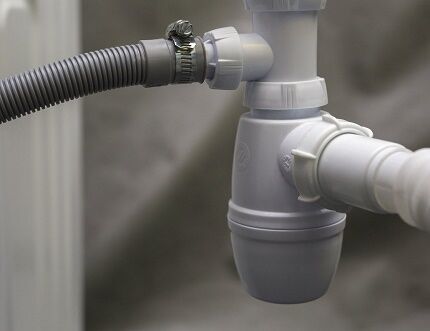
An important function is also considered to be reducing the load on washing machine pump, which extends its life, and significantly. Is it necessary to use it?
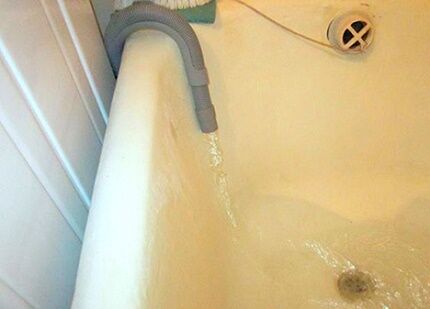
Modern washing machines are equipped with drain hoses, which can easily replace a siphon. The advantage of this method of water drainage is ease of installation and operation.
Since all that needs to be done to prepare for the draining procedure is to run the hose into the bathroom, sink, or toilet. This device is attached using a curved element - a holder included with the hose.
If this method has only one advantages, then there are more disadvantages and they are more significant. So, if the hose is not connected to the sewer pipe, then for forming a water seal the hose will have to be bent into an S or U shape.
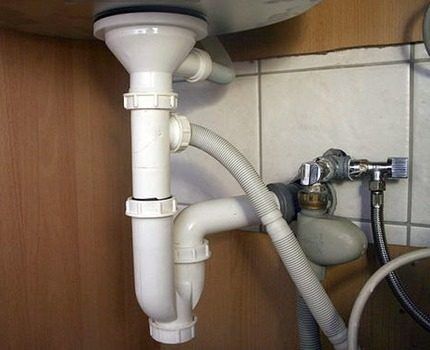
As a result, the thin-walled corrugated product will be constantly under load. Which often leads to a violation of its tightness and related problems.And by abandoning the water seal, the owner of the washing machine risks saturating his home sewer aromas.
Often the distance from the washing machine to the sewer pipe outlet is impressive, but it is not possible to lay the drain hose correctly, that is, with a slope. As a result, the load on the pump increases significantly, which will lead to its premature failure.

In addition, if the length of the existing hose is insufficient, it is increased using an additional piece of the same product and a connecting coupling. Which also leads to an increase in resistance, which means an increase in the load on the pump.
Additional connecting points for all parts of the drain hose are not reliable and durable enough. As a result, a leak can start at any time.
Although drain hoses are inexpensive and easy to replace, the fear of causing harm to themselves or their neighbors should deter washing machine owners from continually using a hose, especially an improperly routed one, instead of a siphon.
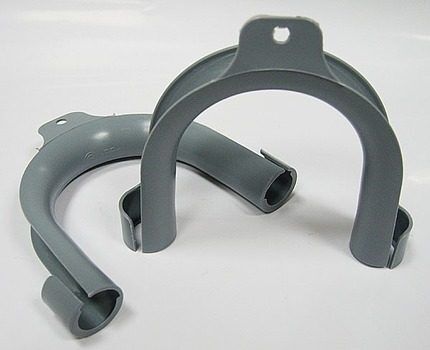
Due to these significant disadvantages, using a drain hose can only be a temporary solution. You can organize the drain properly by connecting the washing machine to the nearest sewer pipe. If it is far away, then it should be lengthened.
To connect the hose to the pipe, you should purchase an additional rubber cuff, which will level out the difference in the diameters of these products.In addition, this way you can achieve the desired tightness of the connection. In this case, you must comply with the instructions included with the washing machine.

All of the above indicates that without a siphon designed for washing machine connections, you can get by, but it will not be the most practical or best solution.
Guidelines for choosing a device
Selecting drain fittings is difficult only because of the low awareness of potential buyers with this type of equipment. But it’s not difficult to fix this, since there are only a few types of it, which greatly simplifies the task.
The following video will introduce you to the typical types of siphons used when connecting washing machines:
These include the following siphons:
- external;
- internal;
- combined.
Since each type has its own advantages and disadvantages, an interested person should familiarize himself with them in more detail. This will help save time and money when purchasing.

Inexpensive and extremely unsightly
Typically, external siphons are used if the washing machine and the nearest sewer pipe are separated by a fairly large distance. This makes it possible to install in a convenient place and use for this purpose structurally simple products that are not distinguished by compactness or other technical delights.
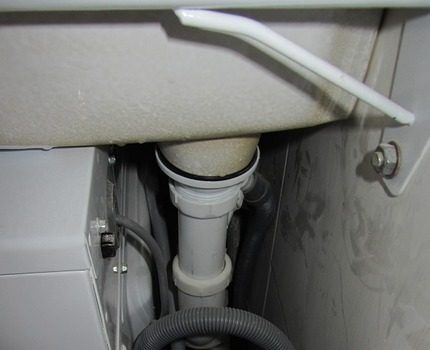
The disadvantages include the fact that external siphons do not make it possible to install existing washing machines close to the walls a person needs. Therefore, in some cases, insufficient compactness can also be considered a disadvantage.
Convenient and inexpensive models
A feature of all internal siphons is their small dimensions and the fact that they are mounted inside the wall, for which special recesses are made. The above allows you to install washing machines close to any wall of the room.
In addition, internal siphons are distinguished by high aesthetic qualities. Their body is recessed into a pre-made cavity, and the outer part is covered with a decorative panel, which can be metal or plastic. Therefore, of the entire structure, only the compact fitting, bent at 90 °C, can be seen.
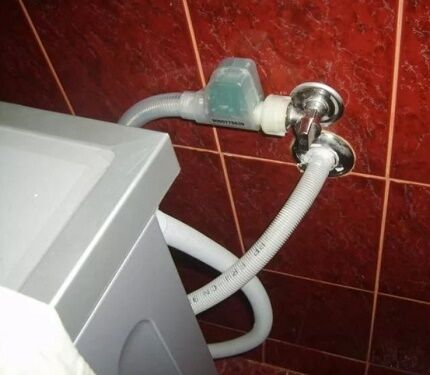
The disadvantages of internal siphons are the relatively complex installation and considerable cost, compared to other types. In addition, they are much more difficult to dismantle, which causes some inconvenience when cleaning is necessary.
Universal combined option
Visually combined siphons do not differ from ordinary ones, with the exception of just one point. This is the presence in the design of several fittings intended for the simultaneous connection of drain hoses belonging to different objects.
This product is versatile, therefore it is used to simultaneously drain contaminated water from washing machines, washbasins, kitchen sinks, and dishwashers.
How to install a combined siphon is described in the following video, and it also shows the advantages and disadvantages of this method of connecting to the sewer:
Differences in size and shape
For ease of use, all modern drain fittings differ in shape and size. This is done to ensure the required performance, efficiency, prevention of clogging, ease of installation, providing sufficient aesthetic qualities, and solving other issues.
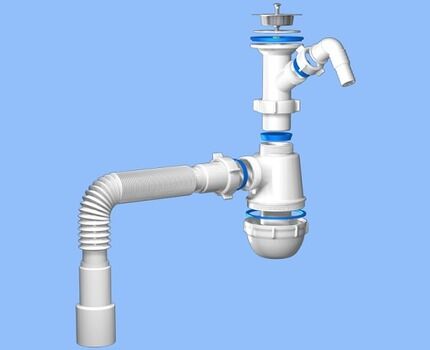
Therefore, if a potential buyer needs to save space when installing a washing machine, then he should pay attention to flat siphons. They have the most compact dimensions.
As a result, they make it easy to place the purchased washing machine under the existing washbasin sink. Which is an effective solution, especially in small bathrooms. This type of installation can be an interesting design solution if a person chooses a matching appliance and sink.
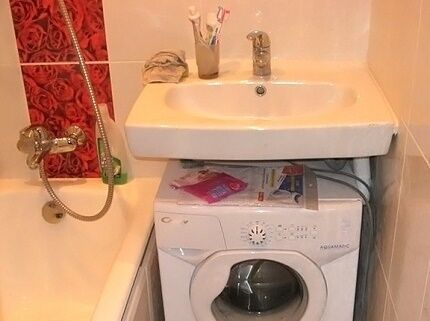
Devices with check valves
Although modern siphons successfully resist clogging and the formation of traffic jams, anything can happen. Therefore, the buyer should take care of an additional degree of protection.
For these purposes, a siphon for a purchased washing machine with a built-in check valve is used. It is designed to solve a number of important tasks to ensure safe use.
Which include:
- Preventing the return of contaminated water when plugs form in sewer pipes.
- Elimination of unauthorized drainage of water during the washing process.
The presence of this valve is especially important for residents of the lower floors of houses. Since they suffer the most from clogged sewer systems.
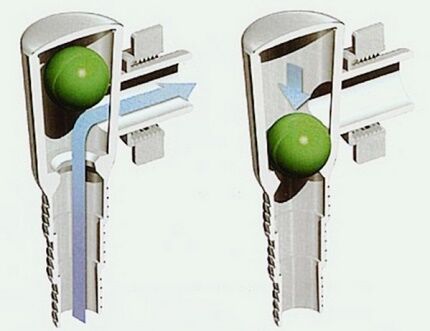
At the same time, a potential buyer of this type of siphon should pay attention to the fact that many washing machines are supplied with check valves already equipped. Therefore, in order to avoid unnecessary expenses, this issue must be clarified in advance.
Preparing to purchase fittings
To organize an effective washing process, you can use any type of siphon. The main thing is to take into account ease of installation, use and aesthetic qualities. If the washing machine is located far from the siphon, and saving space is not an issue, then you can buy any type of siphon.
It is ideal when the drain fittings are hidden from view by something - a bathtub, sink, door, furniture, or any other object. If the shape of the siphon “hurts the eye”, does not add aesthetics to the room, and there is no way to hide it, then you need to purchase a built-in product.
This solution will allow you to place the washing machine close to any wall the owner needs and hide the drain fittings.This option will significantly improve the appearance of the room.
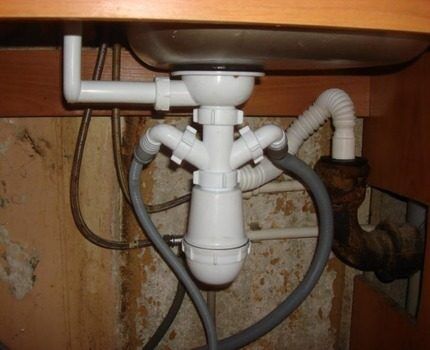
When is installation planned? water lily shell, then it would be correct to purchase a flat siphon. It takes up a minimal amount of space, so you can easily accomplish your plans.
If a potential buyer plans to drain contaminated water from 2-3 types of equipment simultaneously, then the optimal solution would be to purchase a combined siphon that has the required number of fittings for connecting drain hoses.
If there is no check valve in the design of the washing machine, you should not save money on its purchase. The owner will not regularly benefit from it, but in a critical situation this product will save you from significant troubles and losses.
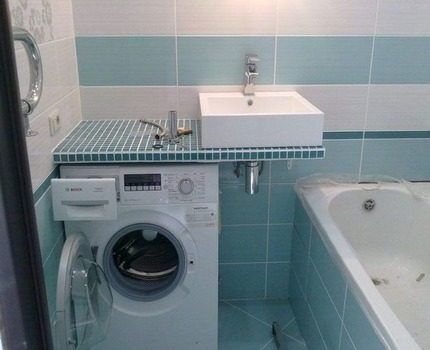
There is no need to skimp on the quality of the siphon itself or its components. Since their service life is always relatively short, and budget options remain operational for an even shorter period of time.
Installation of the purchased product
When installing a siphon yourself, you should always take into account a number of mandatory rules. Otherwise, it will not be possible to organize effective drainage of contaminated water, and this will also affect the performance of the washing machine.
Mandatory installation rules include the following:
- the siphon cannot be installed higher than 80 cm from the level at which the washing machine is located - non-compliance entails a large load on the pumping device, which leads to its rapid wear;
- You should not lengthen the drain hose; such a solution will again lead to a significant increase in the load on the washing machine pump.
If you still had to perform an extension, then this should be considered as a temporary solution. There is no need to throw the drain hose on the floor, as the pump will have to put in even more extra effort to do its job.
Therefore, the best way to solve the length problem is to connect the sewer pipe to the required distance.
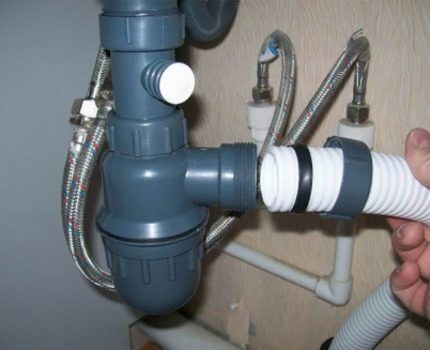
If this is not possible, then the hose should be laid along the wall maintaining the required slope in order to ensure gravity flow of water. In this case, the pump and washing machine motor the permissible loads will apply, which means the service life will not be reduced.
If you want to install the purchased siphon yourself, then you need to understand that this will be a simple operation only if the sewer pipes, sinks, washing machine, etc. are installed and connected. And the necessary preparatory work was completed, for example, a recess was made in the wall for a built-in siphon.
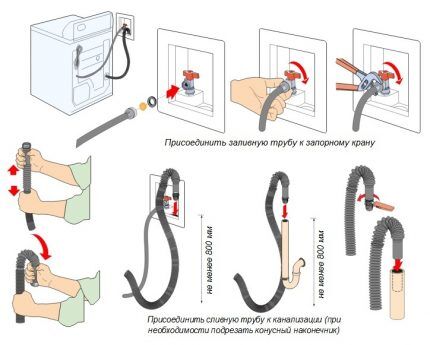
Additionally, a number of features need to be taken into account.For example, if the aforementioned internal siphon is installed, and tiles are used to decorate the walls of the bathroom, then the cladding is done first. And only then a place for the drain fittings is selected. Since working in the specified sequence will allow you to obtain higher aesthetic qualities.
If any of the listed conditions are not met, then installation will necessarily require significant knowledge and special tools. Which makes the capabilities of an unprepared person limited.
Mistakes are often made that lead to financial losses. This indicates the need to use the services of craftsmen for complex work on wiring communications and other things.
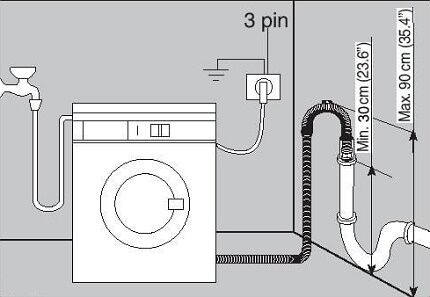
However, a simple siphon replacement or simple installation is quite simple to perform. To do this, you need to connect the product to the sewer pipe, and then connect the drain hose.
To ensure proper sealing, new gaskets should be used. And after dismantling the old siphon from the sewer pipe, traces of dirt must be removed from the hose.
After completing the installation procedure, you should carefully check the tightness of all existing clamps, bolts, and other fasteners. Next, you need to drain the contaminated water in test mode.
Why is toilet paper placed under the siphon? Such a simple solution will allow you to detect even minimal leakage, which is not always possible to do visually.Therefore, verification should be carried out only using the specified control method.
If a combined type of drain fitting is used, then it is worth simultaneous draining from all equipment in use. This will allow you to check the tightness and performance at maximum load.
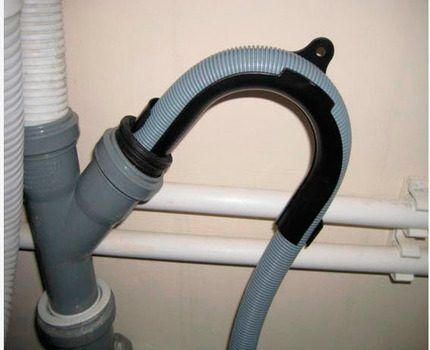
If testing does not reveal leakage of the siphon for draining contaminated liquid from the washing machine, then the owner can proceed to normal use. And without any restrictions.
Conclusions and useful video on the topic
You can get acquainted with all existing types of siphons by watching the following video:
To choose the best siphon option, which makes it possible to uninterruptedly drain contaminated water from washing machines for a long time, it is enough to have a small amount of knowledge.
Since only a few types of drain fittings are produced and used by washing machine owners, which are quite sufficient to satisfy all needs. And also you should never forget that the siphon must be installed correctly.
Tell us about how you selected and installed a siphon with a pipe for draining dirty water from the washing machine. Share valuable information on the topic of the article. Please leave comments in the block form below, post photos and ask questions about points of interest.




The purchase of the first automatic washing machine occurred around 2000.The manager at the store assured me: how great it is that you don’t have to worry about draining the water from the washing machine; you just need to use a hose to overhang the side of the bathtub. When the hose fell to the floor, all the water ended up on the tiles and began to flow into the hallway, I began to think about the correctness of this decision. To all the so-called “conveniences” it is worth adding: hot fumes from dirty powdered water and constant leaks in the bathroom. The information that there are siphons for connecting washing machines turned out to be a lifesaver!
A siphon for a washing machine is certainly a very useful thing, but how did you manage to attach the hose to the bathroom so that it fell on the floor and drained water there? You can even just throw the hose inside the bathroom and it won't run away. And in general, when the machine is washed, you need to look in from time to time to make sure everything is in order. By the way, we connected the siphon to the washbasin, but even so, I periodically go to the bathroom to check.
In the madhouse they are encroaching on the food! How can a hose fall to the floor? There is a special device that “hooks” onto the edge of the bathtub /potty/.
My washing machine drain is connected to the sink siphon. Today I was cleaning the sink and discovered that the machine hose was connected using a rubber plug gasket that opened towards the drain under pressure. I wonder if this is a design decision or the know-how of the plumber who installed the washing machine.
This protects the washing machine from “dirt” getting into it from the sink where dishes are washed (if the siphon sump is clogged).